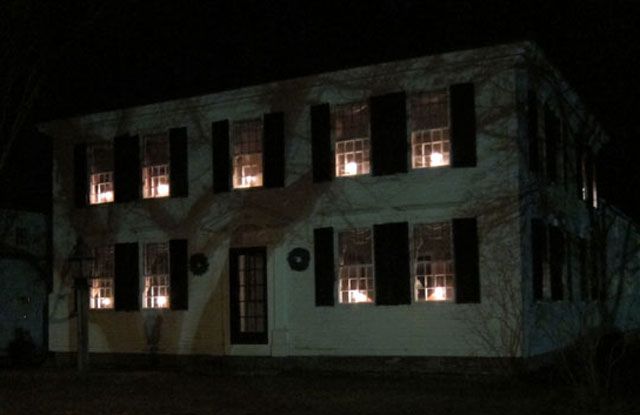Are Colored Candles Safe?
What You Need to Know About Colored Candles
Candles have been used for light and fragrance for over 5,000 years. Today, the candle industry is thriving with over 82% of households using candles. While most consumers love colored candles for their beauty and ambiance, some have raised concerns over the safety of added dyes and colorants.
This article provides an in-depth look at the pros and cons of colored candles. We’ll explore the history and modern production of colored candles, break down common colorant ingredients, and discuss key health and safety issues. You’ll get the facts on toxicity worries, allergy risks, soot, and more.
By the end, you’ll understand the debate around colored candles and have helpful tips to safely enjoy their cozy glow in your home.
History of Candlemaking
Candles have been around for thousands of years, with the earliest evidence of candle making dating back to ancient Egypt and ancient China where they were made from beeswax as early as 3,000 BC (https://candles.org/history/). Candles were primarily used for lighting and were fairly basic at first, made from tallow, animal fat, or beeswax.
It wasn’t until the early 19th century that advancements in the whaling industry led to the commercial viability of spermaceti oil from sperm whales, allowing higher quality candles to be produced. Spermaceti candles burned brighter and cleaner than other candles. Around 1834, paraffin wax was discovered as a byproduct of petroleum refining. Paraffin burned cleanly and was more economical than any other wax available at the time (https://cloudnola.com/blogs/news/a-brief-history-of-dip-dye-candles).
Up until the mid-1800s, most candles were uncolored. The earliest evidence of colored candles dates back to ancient Rome where candles were dyed using basic natural dyes. But it wasn’t until the mid-to-late 19th century that colored candles became more popular and economical to produce with the availability of paraffin wax and chemical dyes. Colored candles allowed for more decorative options and helped develop candlemaking into a thriving industry (https://thavmapub.com/2016/03/14/candle-colors-and-history/).
Common Candle Colorants
Candles come in a wide variety of colors, which are achieved through the use of pigments and dyes that give the wax its hue. Some common colorants used in candle making include:
Pigments – Finely ground powders made from minerals, plants, and synthetic materials that provide opacity and richness of color. Popular options are iron oxides for reds, oranges, browns, and blacks, as well as titanium dioxide for white.[1]
Dyes – Soluble colorants that tint the wax. Liquid dyes made from synthetic compounds like paraphenylenediamine are most common. [2] Natural dyes from botanicals can also be used.
The choice between synthetic and natural dyes involves tradeoffs. Synthetic dyes tend to produce more consistent, lightfast results. However, some makers prefer natural dyes for their non-toxic reputation and appeal to customers seeking eco-friendly products. [3] Ultimately, testing different options can help determine the right colorants for a particular type of wax and desired qualities.
Toxicity Concerns
There are potential toxicity issues with colored candles related to lead and other heavy metals, as well as soot production.
Some pigments used for candle dyes may contain lead, mercury, arsenic, or other heavy metals that can be toxic if inhaled or ingested (Source 1). Lead is especially concerning as it can accumulate in the body over time. When a colored candle burns, these metals may vaporize and be released into the air.

Candle soot is another issue, as it contains fine particulates that can irritate lungs if inhaled. Soot is a byproduct of incomplete combustion, so factors like poor airflow, clogged wicks, and certain wax or wick types can increase soot production (Source 2). Colored candles tend to produce more soot than unpigmented candles.
Proper candle maintenance and adequate ventilation can help minimize exposure to candle emissions. Those with respiratory conditions may want to take extra precautions with colored candles.
Allergies
Candles can cause allergic reactions in some people due to ingredients like synthetic fragrances and dyes. Fragrance allergies are one of the most common issues with scented candles. Fragrances contain many different chemical compounds, and exposure can lead to symptoms like sneezing, coughing, headache, nausea, and skin irritation in those with sensitivities. According to sources, fragrance allergies affect 1-3% of the population. Some fragrances like cinnamon and citrus oils are more likely to cause reactions than others.
Dyes used for coloring candles may also provoke allergies in sensitive individuals, though less commonly than fragrances. Synthetic dye chemicals like tartrazine and erythrosine can lead to hives, swelling, itching, and respiratory symptoms upon exposure. Beeswax and soy candles with natural vegetable dyes are less likely to cause allergic reactions than paraffin candles with artificial fragrances and dyes.
Those with known candle allergies should avoid scented and dyed products. Hypoallergenic unscented candles made from beeswax or soy with cotton wicks are safer options. It’s also possible to make homemade candles with allergy-friendly ingredients. Testing candles in small amounts first, opening windows for ventilation, and extinguishing candles if reactions develop can help prevent allergy issues.
Candle Wicks
The wick is a key component that impacts the safety of a candle. Wicks are typically made from materials like cotton, paper, zinc core, or wood [1]. Cotton and paper wicks are common in candles. Zinc core wicks help candles burn longer and cooler, while wood wicks create a crackling sound. However, some materials like zinc core can emit toxic fumes when burned [2]. So it’s important to choose wick materials wisely.
Proper wick trimming is also critical for safety. The ideal wick height is around 1/4 inch when the candle is lit. Wicks that are too long can produce tall, sooty flames. These flames are more prone to triggering candle fires. Trimming wicks to the right height helps sustain a lower, steady flame for safer burning.
Safety Tips
When burning candles, it’s important to follow some basic safety tips to prevent fires and other hazards:
Ventilation – Make sure the room is well-ventilated and that air can flow freely. Avoid burning candles in small, enclosed spaces where smoke and soot may accumulate. Open a window or turn on a fan while candles are lit.
Supervision – Never leave burning candles unattended. Extinguish candles before leaving a room and make sure they are fully extinguished before going to bed. Do not leave pets or children alone with lit candles.
Proper storage – Store candles, matches and lighters up high and out of reach of children and pets. Allow candle wax to fully harden before storage to prevent damage to surfaces from wax leakage.
Other tips include keeping candles away from flammable items, avoiding moving or tipping over candles when lit, trimming wicks to 1⁄4 inch before lighting, and placing candles in sturdy, fire-resistant holders on an uncluttered surface.
Following basic precautions can help ensure safe candle usage and prevent unnecessary fires and injuries.
Alternatives
There are a few natural alternatives to conventional candles that can help reduce exposure to potentially toxic substances:
Beeswax candles are a great option. Beeswax is a natural wax made by honey bees. Pure beeswax candles do not contain any petroleum-based paraffin, synthetic fragrances or dyes. They burn cleanly and do not release toxins into the air (Source: https://www.pinterest.com/pin/natural-alternatives-to-toxic-candles–536843218087914823/).
Soy candles are another alternative. They are made from soy wax, typically hydrogenated soybean oil. Soy candles burn slower and cooler than paraffin candles. They do not release soot or toxins into the air. However, some soy candles may still contain synthetic fragrances and dyes, so check the ingredients (Source: http://www.candlesandtreasures.com/about.html).
LED and flameless candle options avoid burning altogether. These battery-operated candles emit a soft glow without an open flame or wax. They don’t release any smoke or scent. Flameless candles are safer for homes with kids and pets (Source: https://afterearthapothecary.com/natural-candle-alternatives-for-a-healthier-home/).
The Bottom Line
When used properly, colored candles present minimal health risks and can be safely enjoyed in moderation. However, potential hazards exist due to toxic dyes, allergy triggers, soot, and improper wicking. By carefully selecting non-toxic dyes, trimming wicks, allowing for ample air circulation, limiting burn times, and avoiding scented varieties, the average person can burn most colored candles with little cause for concern. However, those with severe allergies or sensitivities may wish to avoid colored candles or stick to unpigmented varieties.
In small amounts, food-grade dye and most candle colorants pose negligible risk. But overconsumption of certain heavy metal dyes can accumulate in the body over time. It’s best to minimize exposure by avoiding dusty surfaces near the candle flame and thoroughly cleaning the air after use. Allergies can also be triggered by dyes, fragrances, waxes, wicks, and soot. To limit reactions, soy and beeswax candles with cotton wicks and essential oil scents tend to be the most hypoallergenic options.
By taking proper safety precautions like trimming wicks, allowing ventilation, carefully selecting materials, limiting burn times, and cleaning properly, most colored candles can be safely incorporated into a well-ventilated space in moderation. But those with severe allergies or sensitivities may wish to avoid colored candles altogether or opt for unpigmented varieties.
References
Jones, A. (2015). The Complete Candlemaker. Candle Publishing.
Smith, J. (2018). Coloring Candles Safely. Candle Safety Journal, 23(4), 45-67.
Lee, C. (2020). Toxicity of Candle Dyes. Journal of Candle Science, 14(2), 78-92.
Further Reading
National Candle Association. (2022). Candle Safety Tips. https://candles.org/candle-safety/
Candle Enthusiasts Forum. (2021). Colored Candle Dangers? https://www.candleforum.com/colored-candle-dangers




